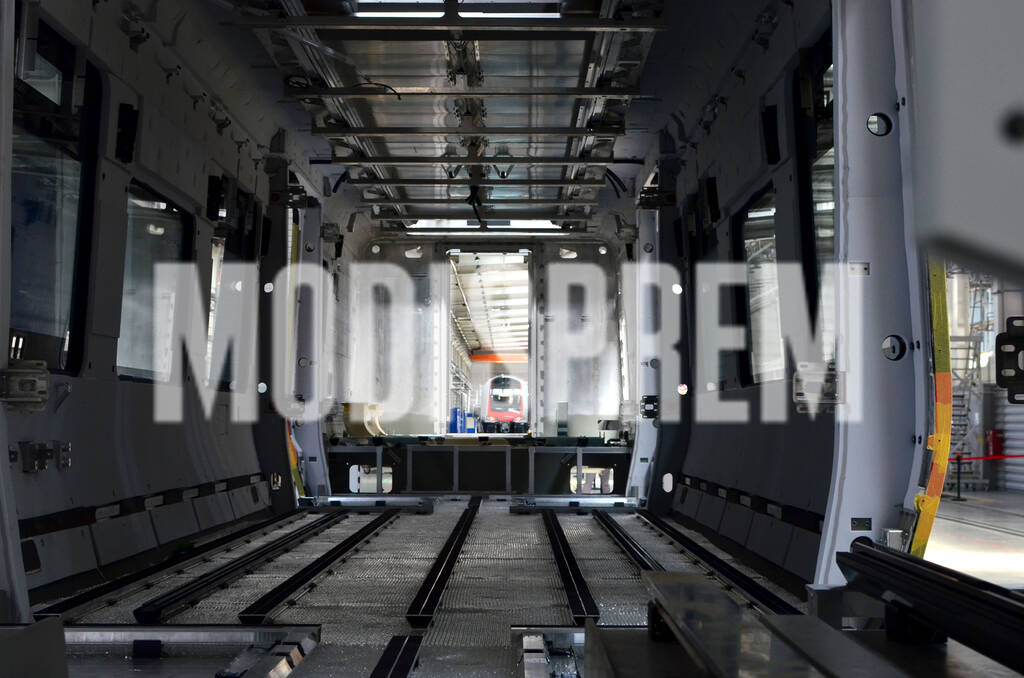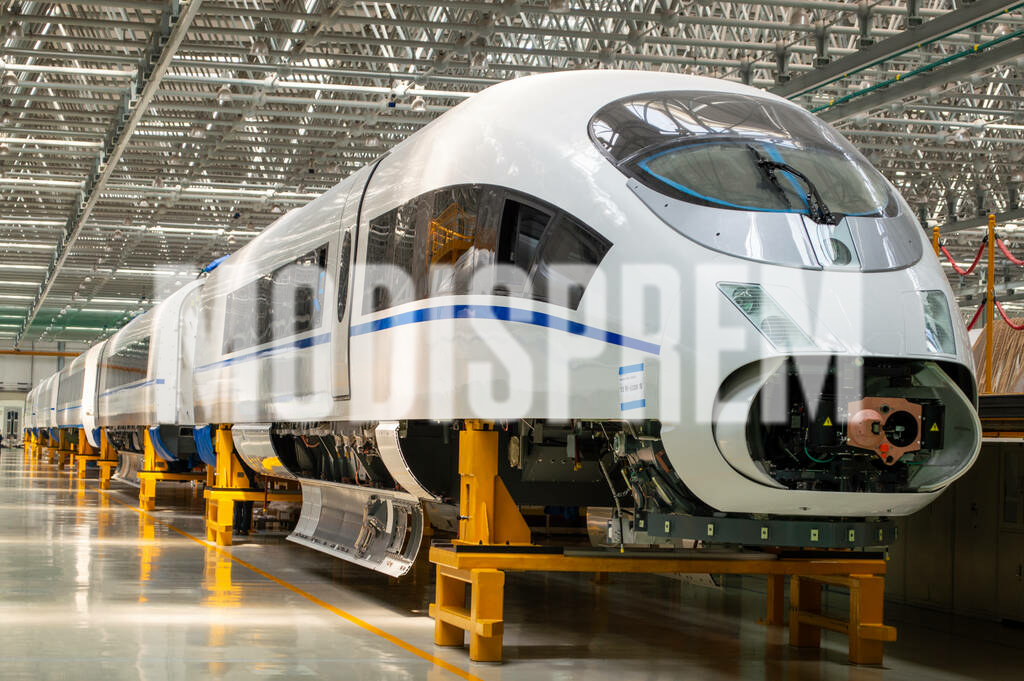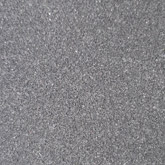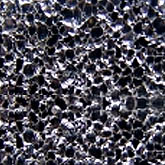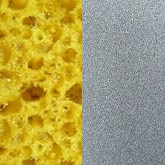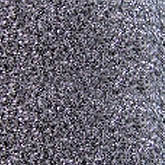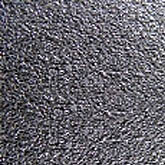Railroad Industry
Modisprem helps to reduce the weight of transport vehicles through the use of new lighter materials or by assisting with the redesign of structures, optimising them to meet the requirements of the specifications.
Our experience in other sectors (automotive, aeronautics, etc.) enables us to propose solutions using composite materials with carbon, glass, aramid, metal or hybrid fabrics. Our aim is to reduce weight and consumption.
We offer a wide range of materials that allow us to meet the demanding regulations of the railway sector.
Applications:
- Structural foams and insulations that help to reduce the weight of elements in the train structure.
- Materials with all types of properties: thermal, water-repellent and hydrophobic.
- Noise absorption foams with high protection capacity.
Melamine foam
Melamine foam is a lightweight and highly porous material that is characterized by its ability to withstand high temperatures and retard flame propagation. This makes it particularly suitable for use in trains, where fire safety is a crucial consideration.
Melamine foam is used in the construction of acoustic and thermal insulation panels for train walls, ceilings, and floors. These panels help reduce heat transfer and sound transmission between train compartments, thus improving energy efficiency and passenger
comfort.
Furthermore, melamine foam is employed in the manufacturing of energy-absorbing components such as impact protectors and fire-resistant seals. These components enhance safety in the event of collisions and protect train compartments from moisture penetration and toxic gases during fire incidents.
It is important to note that melamine foam complies with railway industry-specific fire safety regulations and standards, such as the EN 45545 standard in Europe.
Structural core foams
Structural core foams, also known as core foams, are widely used in the railway industry for structural panel applications in trains.
These foams are characterized by their uniform cellular structure and high compression strength, making them ideal for providing stiffness and strength to the structural components of trains.
Core foams are used in the manufacturing of floor, ceiling, and wall panels, as well as structural elements such as reinforcements and beams in train carriages and bodies. These panels and components provide structural strength, reduce the overall weight of the train, and improve energy efficiency.
Some examples of core foams used in trains include:
- Core foams offer a unique combination of properties such as high mechanical strength, lightweight, and thermal insulation.
- This makes them a popular choice in the manufacturing of structural components in trains, allowing for weight reduction and improved efficiency without compromising on strength and safety.
Foams are commonly used in train seats to provide comfort and support to passengers. These foams are designed to offer a combination of softness and resilience, creating a cushioned seat that conforms to the user’s body. Some types of foams used in train seats include:
- Polyurethane foams: Polyurethane is one of the most common materials for train seat foams. These foams are known for their high density and ability to bounce back, allowing them to maintain their shape and effectively support the weight of the passenger.
Additionally, polyurethane foams can vary in terms of firmness and comfort level, allowing for customization to different preferences. - Latex foams: Latex is another material used in train seat foams. These foams, whether natural or synthetic latex, offer a soft and elastic feel. Latex is known for its ability to conform to the body shape, providing comfortable support and reducing pressure on specific points.
- Memory foams: Memory foams are highly popular in the manufacturing of train seats due to their heat and pressure responsiveness. These foams mold to the body shape in response to body heat, providing personalized support and relieving pressure on sensitive areas. Memory foams are particularly valued for their slow return to their original shape, allowing for even weight distribution and increased comfort during extended periods of time.
In addition to providing comfort, these foams can also incorporate fire resistance and impact absorption properties to enhance passenger safety in case of accidents or collisions.
The foams used in train seats must comply with
specific safety standards and regulations of the railway industry to ensure passenger protection and comfort.
Whisper foam
Whisper foam is a specific type of foam material used in trains to provide enhanced acoustic insulation and noise reduction. It is designed to minimize the transmission of sound and vibrations, creating a quieter and more comfortable environment for passengers.
Whisper foam is typically made from open-cell polyethylene foam, which has excellent sound-absorbing properties. The foam structure is designed to trap and dissipate sound waves, reducing noise and reverberation within the train compartments.
The foam is commonly used in various areas of the train, including the walls, ceilings, and flooring. By applying whisper foam to these surfaces, the overall noise level inside the train can be significantly reduced, creating a more pleasant and peaceful travel experience for passengers.
In addition to its acoustic benefits, whisper foam can also provide thermal insulation and contribute to energy efficiency by helping to maintain a consistent temperature inside the train compartments.
Overall, whisper foam plays an important role in improving the acoustic comfort and passenger experience in trains by reducing noise and creating a quieter environment.
Thermal insulation
Thermal insulation in trains is crucial for maintaining a comfortable temperature inside the carriages and minimizing heat loss or gain.
This insulation helps regulate the ambient temperature and reduces the heating or cooling load required, thereby contributing to the energy efficiency of the train.
Different materials and techniques are used to achieve effective thermal insulation in trains.
Some common solutions include:
- Insulating panels: Specially designed insulation panels made of low thermal conductivity materials such as polyurethane foam, extruded polystyrene, or mineral wool are used. These panels are installed in the walls, ceilings, and floors of the carriages to provide a thermal barrier and reduce heat transfer between the interior and exterior of the train.
- Sealing and gaskets: Proper sealing and high-quality gaskets on doors, windows, and other openings help prevent air leaks and minimize heat loss. This helps maintain a more stable temperature inside the train.
- Reflective coatings and materials: Reflective coatings can be applied to reduce heat radiation. These coatings can be used on the exterior surfaces of the train to reflect solar radiation and reduce the thermal load.
- Structural design: Proper design of the train structure, including the use of materials with insulating properties in the construction of the body, can contribute to overall thermal insulation.
Thermal insulation in trains not only helps maintain a comfortable temperature for passengers but also reduces energy consumption and operating costs associated with climate control. Additionally, effective thermal insulation can improve energy efficiency and reduce greenhouse gas emissions in railway transportation.
Rubber anti-vibration elements
Rubber anti-vibration elements are used in trains inside the cabin to reduce the transmission of unwanted vibrations and noise.
These rubber elements are designed to absorb and dissipate the energy generated by vibrations, providing a quieter and more comfortable environment for train operators.
The rubber used in the anti-vibration elements has damping properties that help reduce vibrations and provide acoustic insulation, resulting in a decrease in perceived noise inside the train cabin. These elements can take the form of rubber mounts, cushions, or rubber supports, depending on the specific application.
In addition to reducing noise and vibrations, rubber anti-vibration elements can also help protect sensitive components in the train cabin by absorbing impacts and vibrations caused by train movement.
Rubber anti-vibration elements are installed in various areas inside the train cabin, such as the floor, control panels, seats, and work surfaces. By reducing vibrations and noise, these elements improve operator comfort and safety, while providing a more pleasant working environment.
Rubber anti-vibration elements in trains inside the cabin play an important role in reducing unwanted vibrations and noise, thereby improving comfort and the working environment for train operators.
Nonwovens
Nonwoven fabrics are used in various aspects of trains due to their specific properties and advantages. These materials are composed of fibers bonded together through mechanical, thermal, or chemical processes, rather than being woven together with interlaced threads like conventional fabrics.
In the field of trains, nonwoven fabrics are used in applications such as:
- Acoustic and thermal insulation: Nonwoven fabrics can offer excellent acoustic and thermal insulation properties. They are used to reduce noise transmission and regulate temperature inside the train cars, providing a more comfortable environment for passengers.
- Linings and interior covers: Nonwoven fabrics are used to line and cover the interior surfaces of trains. These linings provide a protective layer, improve aesthetics, and help reduce the spread of smoke and fire in case of a fire incident.
- Air filtration: Nonwoven fabrics are used in the air filtration systems of trains to trap particles and contaminants, thereby improving indoor air quality and providing a healthier environment for passengers and staff.
- Seat upholstery: Nonwoven fabrics are used in train seat upholstery to provide comfort, durability, and aesthetics. These materials can be soft to the touch, breathable, and resistant to wear, providing a pleasant seating experience for passengers.
- Moisture and liquid barriers: Nonwoven fabrics can be used as barriers to protect sensitive train components and systems from moisture and unwanted liquids. These barriers help maintain the integrity and performance of equipment under adverse conditions.
Nonwoven fabrics offer several advantages compared to conventional fabrics, such as greater flexibility in terms of design, the ability to conform to different shapes and surfaces, as well as efficient production and competitive costs.
Nonwoven fabrics are used in trains in various applications to provide insulation, protection, filtration, and comfort, thereby enhancing the travel experience and
functionality of train components.
Foams in train filtration
Foams in train filtration play an important role in providing an effective barrier to capture particles and contaminants in air conditioning and ventilation systems. These foams are used in trains to improve indoor air quality and ensure a healthier environment for passengers and staff.
Foams used in train filtration are typically open-cell and made from materials such as polyurethane or polyester foams. These foams have a porous structure that allows the passage of air while retaining particles and contaminants.
Foams are used in train air filters to capture dust, pollen, bacteria, viruses, and other airborne contaminants. By capturing these particles, foams help maintain a cleaner and healthier environment inside the train cars.
In addition to their filtration capabilities, foams can also have antimicrobial properties to prevent the growth of bacteria and mold in air filters. It is important to regularly maintain and replace filtration foams in trains to ensure optimal performance and maintain indoor air quality.









